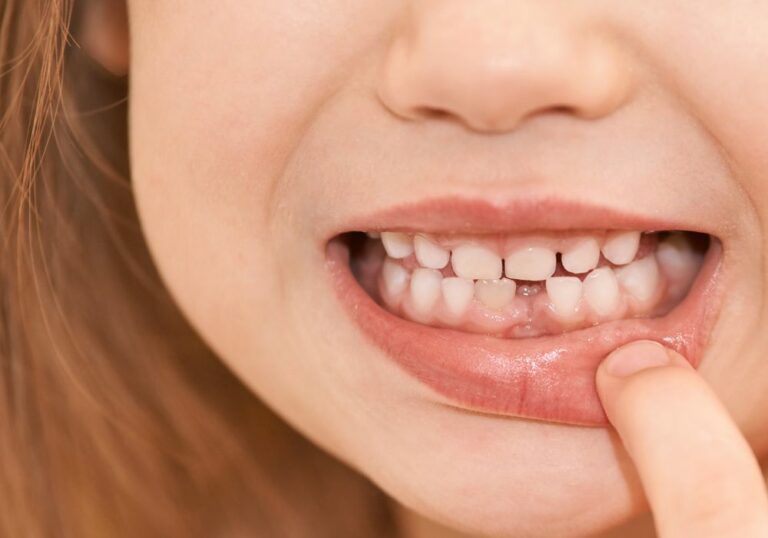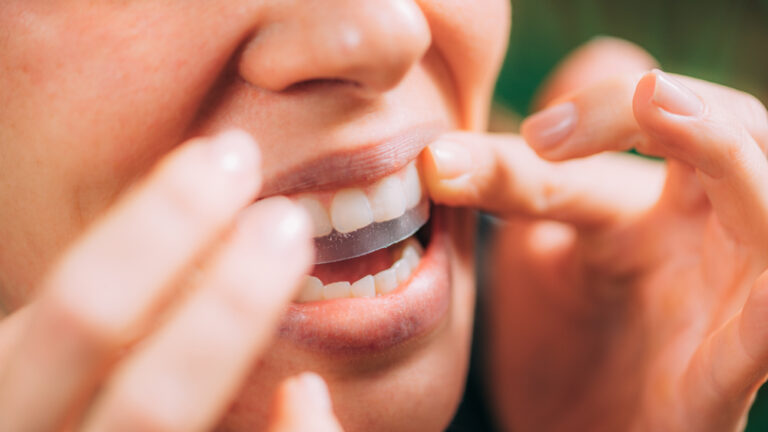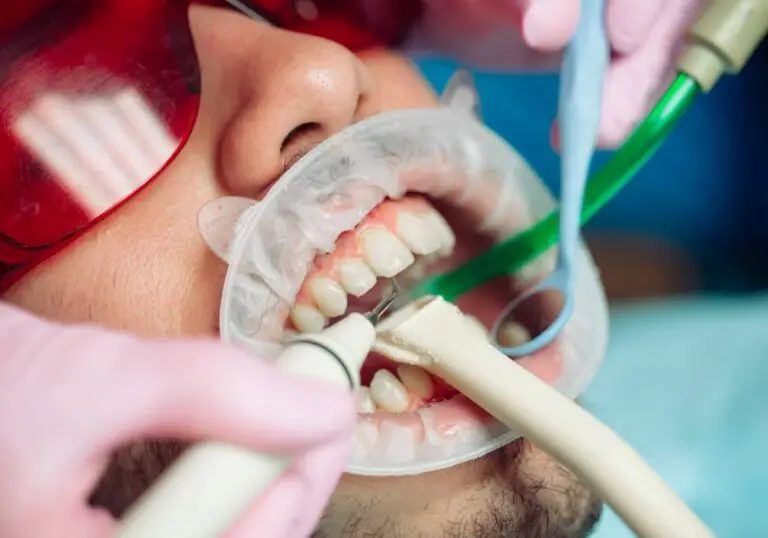Having a piece of your tooth unexpectedly break off can be an unsettling experience. The sudden change to your smile and ability to chew is often alarming. You may be wondering what caused the fracture and if your tooth can be repaired. This article will provide an in-depth exploration into why teeth chip and break, the types of fractures that occur, consequences of leaving them untreated, and both temporary and permanent treatment solutions available. With prompt dental assessment and care, most chipped or broken teeth can be restored both functionally and aesthetically.
What Are the Most Common Causes of Broken Teeth?
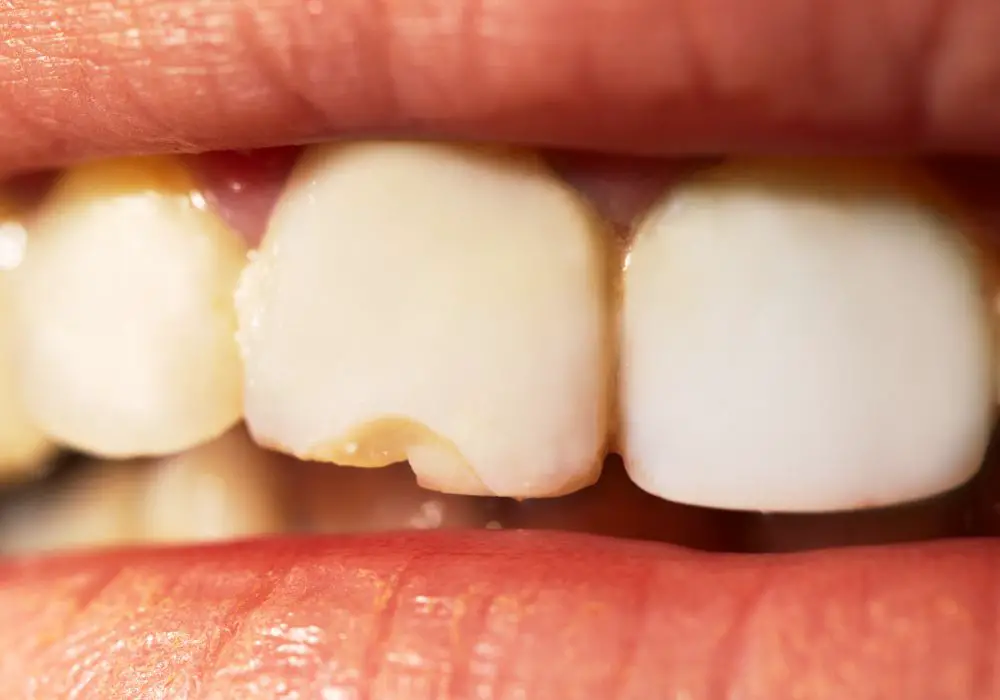
There are a number of reasons you may have fractured your tooth. Here is more detail on factors that can lead to cracked, chipped or broken teeth:
Trauma and Impact Injuries
Sudden trauma to the mouth is a very frequent reason for tooth fractures. Accidents and injuries such as falls, car accidents, sports impacts or collisions can all easily crack tooth enamel. The force of an impact concentrated on a small surface area like a tooth leads to structural damage of the hard enamel outer layer. Fractures from trauma can range from tiny cracks to large broken cusps depending on the intensity and location of the injury.
Dental enamel is actually the hardest substance in the human body. However, it can still chip and crack under excessive force. Enamel is also brittle, so it fractures rather than bending or deforming when an impact occurs. Falls are a very common cause of dental trauma. Most falls cause fractures in the upper front teeth since people tend to land face-first and have their hands outstretched. The lower jaw then slams forcibly into the upper teeth, easily cracking the enamel. Ball and other mouthguard sports can also lead to dental fractures. A ball or equipment hitting a tooth concentrates a lot of intensity in a small area, which enamel cannot withstand.
Chewing Hard Foods or Objects
Bitting down forcefully on something very hard is another frequent way teeth can crack or fracture. Foods like ice cubes, hard candy, popcorn kernels, nuts, seeds or pits can potentially damage teeth when chewed vigorously. The hardness of the object overwhelmed the structural integrity of the enamel. Individuals who absent-mindedly chew on pens, nails, hairpins or other hard non-food items are also at higher risk for eventual tooth fractures. Habitual teeth grinding puts abnormal forces on the teeth as well, which can cause fractures and chipping over time.
Advanced Tooth Decay
Untreated tooth decay that is allowed to penetrate deep into the tooth structure substantially weakens the integrity of the enamel. Areas of advanced decay essentially form defects in the enamel where it is prone to crack and fracture off. The decay process softens and disintegrates the enamel from the inside out. Even slight cracks in heavily decayed teeth may lead to pieces detaching from the main tooth because the underlying structure is severely compromised.
Dental Procedures
Certain dental treatments can sometimes inadvertently cause small cracks or fractures in teeth. The high-speed drills used in filling preparations can potentially cause micro-fractures not visible to the eye. Root canals involve removing tooth structure down to the pulp chamber, which weakens a portion of the remaining shell. Similarly, preparing teeth for crowns requires reshaping the teeth, which removes some supporting enamel. Bridges and partial dentures place greater biting forces on abutment teeth, increasing fracture risk. Despite care to preserve tooth integrity, restorations still predispose teeth to damage with extensive preparation work.
Poor Oral Habits
A number of improper oral habits over time can fatigue and weaken areas of the teeth prone to developing fractures. Fingernail biting exerts concentrated stresses on the incisal edges of front teeth. Using teeth to open bottles or bags, hold nails, or rip open packaging puts excessive asymmetric forces on teeth not designed for those purposes. Even something as benign as chewing on pens and pencils can fracture teeth with repetitive pressure in one area. Poor alignment and occlusal instability from missing teeth also contributes to uneven wear and fracture development.
Large Dental Fillings
Very large fillings substantially weaken the surrounding natural tooth structure. This occurs because carious lesions naturally spread outward from a central location. Prepping the tooth for a filling requires removing all infected enamel and dentin surrounding the cavity, often deep into the tooth. The larger the original decay site, the more tooth structure and enamel needs removal to eliminate the decay. This ends up leaving a tooth more prone to fracture since a significant portion of sturdy original enamel is now missing.
Teeth Clenching and Grinding
Excessive clenching and grinding of the teeth puts considerable daily stresses on the integrity of enamel. This parafunctional habit, known as bruxism, microscopically fatigues the enamel over time. Initially, the outermost layer of enamel rods fray and crack from the repeated grinding forces. Eventually, these tiny defects coalesce into visible chips, fractures and larger missing areas of enamel. Nighttime grinding is particularly destructive because people can exert forces up to ten times higher than daytime maximal biting force.
Gastroesophageal Acid Reflux
Frequent acid reflux can erode and weaken tooth enamel. When stomach acids travel up the esophagus and into the mouth, the low pH softens and dissolves the mineralized enamel surface. Enamel loses essential minerals like calcium and phosphate and develops microscopic defects. This damage cumulatively adds up to compromised enamel that is more likely to fracture off. Bulimia is even more destructive, as the hydrochloric stomach acid is introduced directly into the mouth before reflux even occurs.
Bruxism
Often subconscious, forceful grinding of the teeth can cause slight stress fractures, micro-cracks and accelerate localized wear. During clenching and grinding episodes, upper and lower teeth slide forcefully across each other laterally, which is not a natural movement. The abnormal forces fatigue the enamel, which was designed primarily for vertical compressive forces from chewing. Over months and years, bruxism can literally grind down the biting surfaces of teeth.
Age-Related Cumulative Damage
Enamel weakening and microcracking occurs gradually as we age. Decades of chewing stress, exposure to varying pH levels from foods, dry mouth conditions, inflammation, and everyday wear conspire to deteriorate enamel. Some micro-cracks and fractures may exist for years before finally merging together into a visible chip or defect. Older restorations also further undermine enamel integrity over time. The fractures serve as starting points and focal points for additional decay and damage.
Types of Broken Teeth
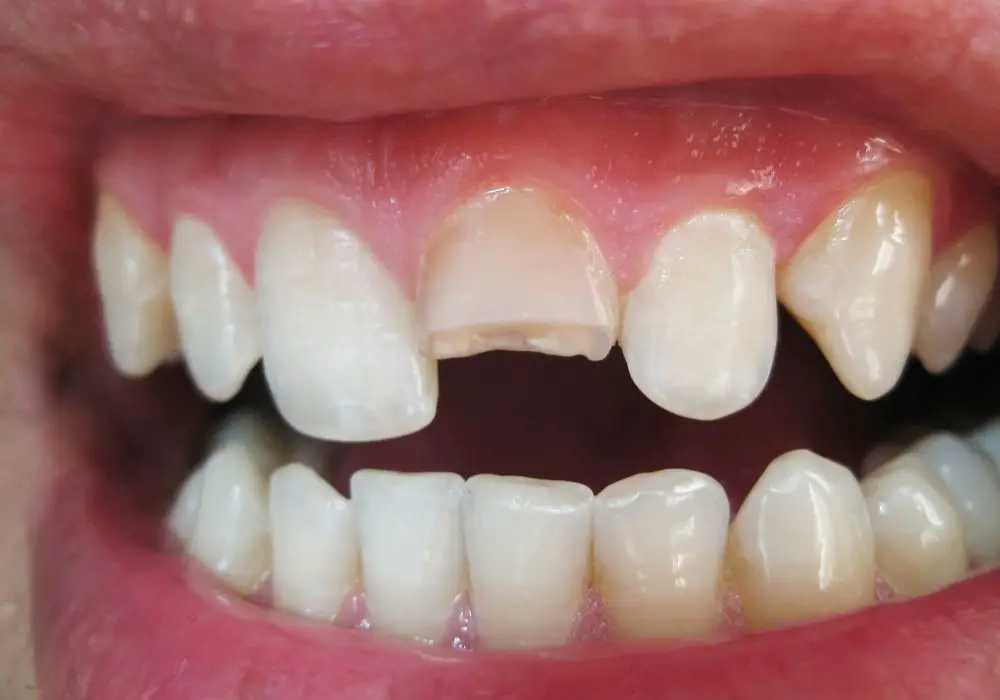
While all dental fractures involve the loss of tooth structure, some distinctions exist among different types of cracked, chipped or broken teeth:
Cracks
Cracks are narrow, thin splits in the enamel that do not extend all the way through to the underlying dentin. There are several types of cracks based on etiology and patterns. Cracked teeth often develop from chewing trauma, decay, or large restorations. The fractures are too narrow to see with the naked eye but can be detected on dental x-rays or under magnification. Craze lines are superficial, benign cracks in the enamel from thermal shock or occlusion stresses. They are not serious and can be considered a type of micro-fracture.
Chipping
Chipping refers to a situation where a segment of enamel breaks off, usually from a corner or edge of a tooth. The missing piece can vary in size from a tiny nick to a more substantial notch. Chipping frequently affects the sharp incisal edges of front teeth, where the enamel is thinnest and most vulnerable. The most common causes are chewing trauma, injury or habitual nail/pen biting. Often, a layer of underlying dentin is exposed in the space where the enamel fractured off.
Fractures
More serious fractures involve the loss of tooth structure extending beyond the enamel outer layer and into the dentin or cementum. Pieces can break off across multiple tooth surfaces, resulting in missing cusps, shattered incisal edges or even a cracked tooth split down into the root. The pulp nerve tissue may or may not be involved, depending on the depth and extent of the fracture. Major fractures often require root canal therapy in addition to restorative work.
Signs and Symptoms of Broken Teeth
How can you tell if you have a cracked or fractured tooth? Here are some common signs and symptoms:
- Visible change in tooth shape from a chip or missing section
- Sharp edges or uneven surfaces that can be felt with the tongue
- Sensitivity to hot, cold, sweet foods and drinks
- Twinges of pain when chewing foods, especially hard items like nuts or candy
- Tooth discomfort that lingers after the stimulus is gone
- Unprovoked tooth pain from pressure changes
- Swelling, puffiness or redness in surrounding gingiva
- Sinus pain from maxillary fractures (upper teeth)
- Discoloration at the fracture site as it picks up stains
- Metallic taste from fluid seeping through fractures
- Halitosis or bad breath from fluid stagnation in cracks
Dental x-rays are also used to identify subsurface cracks not visible on the surface. If you notice any symptoms of a possible fracture, promptly consult your dentist. Early assessment and treatment lead to the best outcomes.
Potential Problems from Leaving Broken Teeth Untreated
While they may seem harmless initially, leaving cracked, chipped or broken teeth untreated can lead to significant consequences. Fractured areas provide pathways for bacteria and fluids to enter the tooth and wreak havoc. Potential issues include:
- Tooth decay – Bacteria rapidly infiltrate down into fractures and start infecting vulnerable inner tooth structure and dentin.
- Pulp inflammation – Deep fractures allow bacteria direct access to the pulp. This causes inflammation (reversible pulpitis) that quickly advances to infected root canals.
- Abscess – Infection spreads through the root canal system and forms an abscess at the root tip, resulting in severe throbbing pain.
- Tooth loss – Left untreated, decay and infection progresses until the tooth is ultimately lost. This occurs in stages, with gradually worsening fractures.
- Bone loss – After extractions, the surrounding bone no longer receives needed stimulation and begins to deteriorate. This can create future problems.
- TMJ disorders – Uneven bite forces from missing teeth leads to TMJ imbalance, pain and dysfunction.
- Aesthetic concerns – Fractured front teeth become unsightly as cracks expand and darken over time.
- Difficulty eating – Broken teeth with sensitivity and edges complicate chewing and bite force.
With appropriate assessment and treatment, consequences like these can be avoided, and teeth preserved.
Temporary Versus Permanent Treatment Options for Fractured Teeth
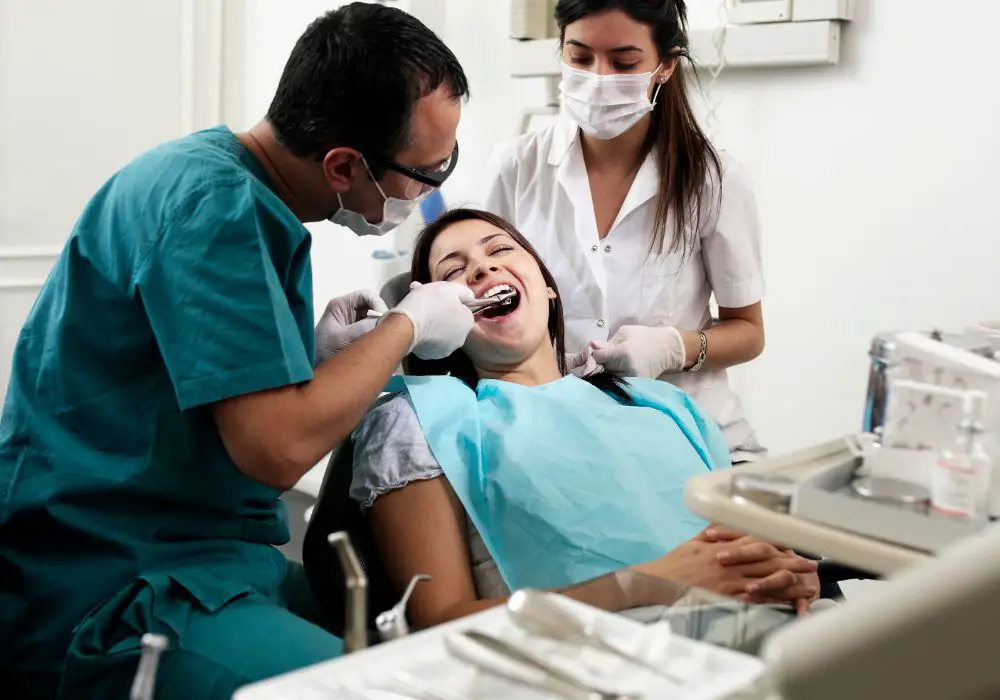
There are both temporary and long-term treatment solutions available, depending on the type and extent of tooth fracture:
Temporary Treatments
- Dental bonding – Composite resin material can be placed for small defect areas or used to smooth rough edges.
- Veneers – These thin porcelain or resin covers can quickly mask minor fractures and chips.
- Orthodontic bands – Bands wrapped around teeth stabilize fragments and prevent further damage.
- Dental crown – A provisional crown protects the tooth when repairs are needed before permanent restoration.
- Root canal – If the pulp nerve is involved, temporary filling and antibiotics may precede permanent treatment.
Permanent Restorations
- Dental fillings – Small defects can be restored with bonded composite fillings for a seamless appearance.
- Crowns – Crowns structurally reinforce compromised teeth and prevent further damage. They are cemented over reshaped teeth.
- Veneers – These thin shells bond permanently over front teeth to mask fractures and customize smile appearance.
- Implants – For non-restorable fractured teeth, a dental implant surgically replaces the missing root structure.
- Bridge – Adjacent teeth are crowned to support a false tooth replacing the missing one.
- Partial denture – A removable acrylic appliance replaces multiple missing teeth with prosthetic ones.
The recommended treatment solutions depend on factors like fracture size, symptoms, aesthetic concerns, remaining tooth structure, and oral health status. Your dentist will advise you on both short-term relief options and long-term repair solutions to restore form and function.
Prevention Tips to Help Avoid Future Broken Teeth
While some fractures occur unpredictably, there are some proactive precautions you can take to lower your risk:
- Wear properly fitted mouthguards during contact sports or vigorous physical activities.
- Avoid chewing on pens, nails, hairpins, ice cubes or other unusually hard items.
- Have teeth grinding or clenching addressed with nightguards, stress management, and TMJ therapy.
- Maintain excellent oral hygiene to prevent tooth decay that weakens enamel.
- Limit frequency of sugary snacks and acidic drinks that can erode and dissolve enamel.
- Use teeth only for chewing food, not as tools or bottle openers.
- Take care with dental habits like brushing, flossing and picking at teeth.
- Get preventive sealants applied to vulnerable biting surfaces of back teeth.
- Consider cosmetic bonding or veneers to reinforce front teeth prone to chipping.
Frequently Asked Questions
How long can I wait to get a chipped or broken tooth repaired?
You should consult your dentist right away, even for minor fractures. Prompt assessment and treatment ensure the best outcome for your tooth. Delaying may allow decay, infection, or further damage.
Can cracked teeth be saved or do they eventually need to be extracted?
With prompt care, most cracked teeth can absolutely be saved! The key is to not wait until the fracture worsens or fully splits the tooth. Even teeth with root fractures can often be salvaged with a crown if addressed quickly.
Should I see my general dentist or a specialist for a tooth that broke?
Your general dentist can provide most fractured tooth treatments. However, for complex cracks extending into the root or requiring advanced techniques, you may be referred to a specialist like an endodontist or prosthodontist.
How can I temporarily relieve pain from a broken tooth while I wait for dental treatment?
Over-the-counter pain relievers like ibuprofen can offer short-term relief. Your dentist may also recommend a pain relief gel to apply directly to the affected area. Eating soft foods and avoiding temperature extremes helps minimize symptoms.
Why do some broken teeth recover naturally while others end up needing root canals or extraction?
The depth of the fracture and whether it penetrates into the tooth pulp largely determines prognosis. Shallow cracks limited to the enamel often need only cosmetic repair. But pulp involvement leads to eventual infection and complications without treatment.
Conclusion
Experiencing a cracked, chipped or broken tooth can be an unsettling occurrence. However, a variety of effective treatment solutions exist both for short-term relief and permanent restoration. In many cases, even significantly damaged teeth can be repaired and saved by a dentist. Avoiding undue delay is critical, as is following long-term preventive strategies. With proper prompt care, functional smile aesthetics and dental health can be maintained even after experiencing minor or major tooth fractures.

